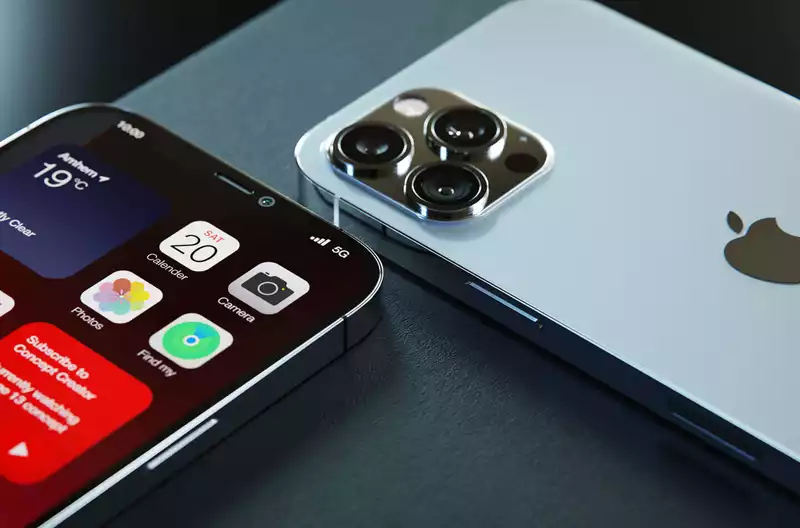I'm not a betting man, but if I were, I would bet a pretty penny that the iPhone 13 would have a display with a 120Hz refresh rate. Android flagships like the Samsung Galaxy S21 and OnePlus 9 Pro already have 120Hz refresh rates. And thanks to LTPO panels, the technology is mature enough that Apple can adopt it in a way that doesn't rob the iPhone of battery life.
But there is a catch. Several iPhone 13 rumors I have heard so far say that Apple will only use a 120Hz display on the iPhone 13 Pro device. This would not only keep the standard iPhone 13 behind its Android rivals, but would cause a major split in the iPhone family between the two Pro versions and the standard and mini models. And I think it could also lead to the death of the entire iPhone ethos.
In the past few generations of iPhones, there were two or more models to choose from. These started as the standard and Plus models, split into the Pro and Pro Max models with the iPhone 11, and expanded to the iPhone 12 mini, iPhone 12, iPhone 12 Pro, and iPhone 12 Pro Max in Apple's latest models.
However, aside from small differences in screen, battery, and device size, the only notable difference between the "Pro" models and the standard models was the camera. For the past two generations, Pro phones have added a telephoto rear camera and, in the case of the 12 Pro Max, sensor-shift technology. But as our iPhone 12 and iPhone 12 Pro comparison shows, the rest of the core design, performance, and other features were essentially the same.
In other words, if you're an iPhone 12 user, you won't feel inferior to iPhone 12 Pro users unless you're really into telephoto shooting. iPhone has its problems, but the fact that the latest flagship offers a uniformly superior experience, It means that it's easy to recommend the Standard or Pro versions.
However, if Apple decides to only include a 120Hz LTPO display on the iPhone 13 Pro and 13 Pro Max, the division between the Standard and Pro devices would be more than just a difference in camera. This would create a split in the iPhone 13 lineup and could make it difficult to decide which model to get.
I have already written that a 120Hz refresh rate would be the major upgrade the iPhone 13 would need to make me interested in buying Apple's next phone. Having used Android phones with 120Hz refresh rates for a while, especially the Oppo Find X3 Pro, a screen with a faster refresh rate makes the phone feel faster, smoother, and more enjoyable. Combine that with the optimized and smooth performance of iOS, and the iPhone 13 could give Apple phone fans a serious upgrade.
Given the availability of high refresh rate displays on mid-range phones, I believe 120Hz is now a must-have feature for flagship phones in 2021. And 120Hz is something that all next-generation iPhone users should be able to enjoy.
Why wouldn't Apple include a 120Hz display in all future iPhones, since keeping the higher refresh rate on the Pro model would force people to pay more to get the best iPhone 13 experience?
A less harsh answer, however, would be that 120Hz panels, even LTPO panels, can consume a lot of power. Therefore, the standard iPhone 13 could be kept as a device for those who want a longer-lasting iPhone on a single charge. Also, the size constraints of the iPhone 13 mini may make it difficult to use a battery large enough to power even a fast updating display.
It may be fine to have a choice, but if you want it, Android has you covered. So Apple's tight control over hardware and software keeps the entire iPhone usage experience very clear, intuitive, and easy to adopt.
Let's take a look at the iPhone ecosystem. The iPhone models available at the Apple Store include the iPhone 12 Pro model, iPhone 12 or iPhone 12 mini (basically the same except for screen size), iPhone SE for those on a limited budget, iPhone 11 for those who don't need a newer model and iPhone XR, and so on, which is really only half a dozen. The older models have different camera setups, but overall, they offer a fairly even iOS experience across the board. You get the latest version of iOS 14, solid performance, and impressive main camera photography.
Compared to the latest models from Samsung, OnePlus, Xiaomi, and others, you need to sit down with a pen, paper, and a strong drink to simply grasp the differences between models in the same series, which is painful in the face of the iPhone family's simple focus.
But if Apple were to make 120Hz and 60Hz iPhone 13 models, the standard iPhone 13 would essentially be a mid-range phone that sits within the traditional flagship family. This could make the clear waters of the iPhone ocean even murkier. And that is very bad for the whole simple philosophy of knowing what you are getting when you buy the latest iPhone. [I sincerely hope the people of Cupertino take inspiration from the Galaxy S21 series and make 120Hz displays standard on all models.
I believe Apple respects its users enough not to try to push out a next-generation iPhone with a 60Hz display in a market where high refresh rates are common.
Given the odd disparity between the specs and ports of the iMac 2021 model and the display of the 12.9-inch iPad Pro 2021 and its 11-inch sibling, my belief may be a bit misplaced. in the fall, when the iPhone 13 is expected to debut, I am sure We'll find out.
.









Comments